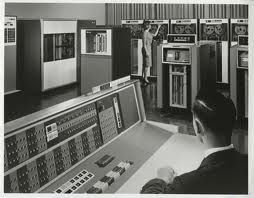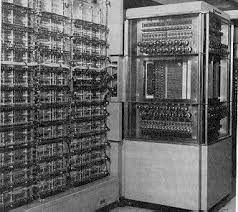The Second Generation:
Transistors
The first major changes in the electronic computers came with the replacement of the
vacuum tube by the transistor.The transistors are smaller, cheaper, and dissipate less
heat than a vacuum tubes but can be used in the same ways as vacuum tubes to construct
computers. Unlike the vacuum tubes, which requires wires, metal plates, a glass
capsules, and vacuums, the transistor is a solid-state devices, made from silicons.

The transistors were invented at Bell Labs in 1947 and by the 1950s had launched
an electronic revolution.They were not until the late 1950s, however, that fully transistorized
computers were commercially availables. IBM again was not the first company to delivers the new technologies. NCR and, more successfully,RCA were the
front-runner with some small transistors machines. IBM followed shortly with the about
7000 series.

The uses of the transistors defines the second generation of computers. It has become
widely accepted to classify computers into generations based on the fundamental
hardwares technology employed (Table 2.2). Each new generations is characterized
by greater processing performances, larger memory capacity, and smaller size than the
previous ones.

But there are other change as well. The second generations saw the introductions
of more complex arithmetics and logic units and control units, the use of highlevel
programming languages, and the provision of system softwares with the
computers.



